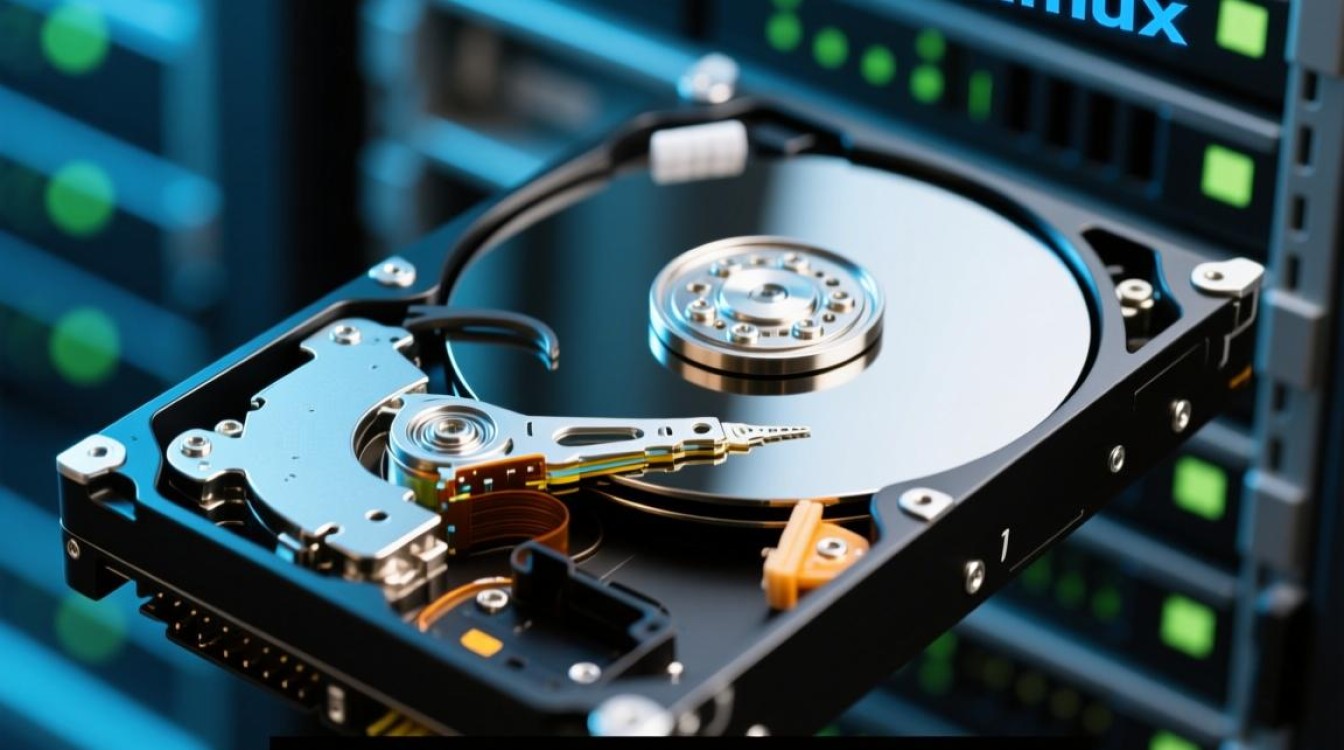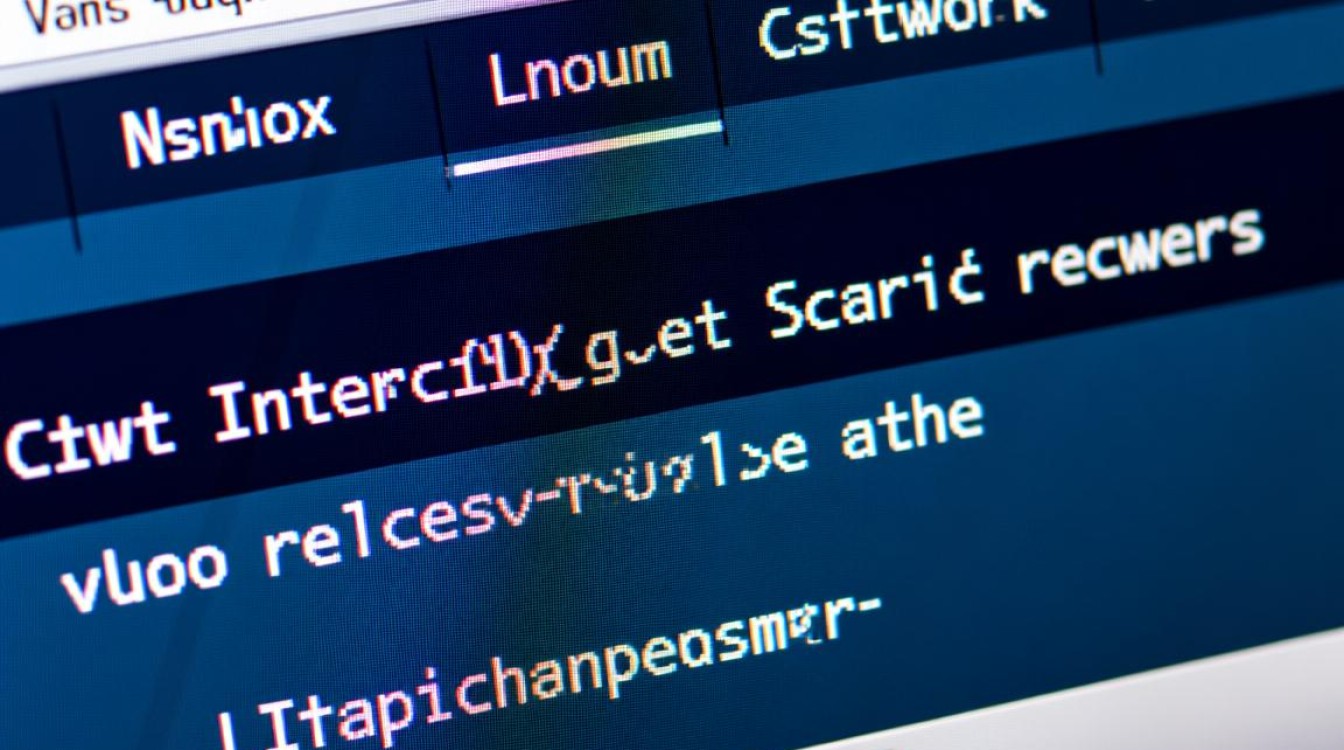Linux 驱动开发入门:从 Hello World 到内核交互
Linux 驱动程序是操作系统与硬件设备之间的桥梁,它负责管理硬件资源、处理设备请求,并为上层应用提供统一的接口,本文将以经典的 “Hello World” 驱动为例,逐步介绍 Linux 驱动开发的基础知识,包括驱动的加载与卸载、字符驱动的实现、关键数据结构的使用,以及常见的调试方法,通过本文,读者可以快速理解 Linux 驱动开发的核心概念,并具备编写简单驱动程序的能力。

Linux 驱动基础概念
Linux 将设备分为三类:字符设备(如键盘、串口)、块设备(如硬盘、U 盘)和网络设备(如网卡),字符设备是最简单的一类,以字节流方式进行访问,无需缓冲区直接与硬件交互,驱动程序的核心任务是实现设备的操作接口,例如打开、关闭、读写、控制等,这些接口通过 file_operations 结构体统一管理。
Linux 驱动可以静态编译进内核,也可以作为模块动态加载,动态加载更灵活,便于调试和维护,因此成为驱动开发的主流方式,驱动模块的本质是一个可执行文件,包含初始化和清理函数,分别通过 module_init 和 module_exit 宏注册到内核。
Hello World 驱动的实现
1 驱动代码结构
一个简单的 “Hello World” 驱动仅需实现初始化和清理函数,并在加载时打印信息,以下是核心代码示例:
#include <linux/init.h> // 初始化和清理相关宏
#include <linux/module.h> // 模块核心宏
#include <linux/kernel.h> // 内核打印函数
// 模块许可证声明,避免内核警告
MODULE_LICENSE("GPL");
// 初始化函数
static int __init hello_init(void) {
printk(KERN_INFO "Hello World, driver loaded!\n");
return 0; // 0 表示成功
}
// 清理函数
static void __exit hello_exit(void) {
printk(KERN_INFO "Hello World, driver unloaded!\n");
}
// 注册初始化和清理函数
module_init(hello_init);
module_exit(hello_exit);
2 关键代码解析
MODULE_LICENSE("GPL"):声明模块遵循 GPL 许可证,避免内核因 “tainted” 而发出警告。printk:内核中的打印函数,KERN_INFO为日志级别,可通过dmesg命令查看输出。__init和__exit:修饰函数,分别表示初始化函数(仅在模块加载时执行)和清理函数(仅在模块卸载时执行),帮助内核优化内存使用。
驱动的编译与加载
1 Makefile 编写
驱动模块需要通过 Makefile 编译,以下是简单的 Makefile 示例:

obj-m += hello.o # 编译为 hello.ko 模块
all:
make -C /lib/modules/$(shell uname -r)/build M=$(PWD) modules
clean:
make -C /lib/modules/$(shell uname -r)/build M=$(PWD) clean
2 编译与加载流程
- 编译:在终端执行
make,生成hello.ko模块文件。 - 加载:使用
insmod ./hello.ko命令加载模块,加载后会执行hello_init函数。 - 查看日志:通过
dmesg命令可看到 “Hello World, driver loaded!” 的输出。 - 卸载:使用
rmmod hello命令卸载模块,执行hello_exit函数,日志中会显示卸载信息。
3 常见问题
- 编译失败:检查内核头文件是否安装(Ubuntu/Debian 系统可通过
sudo apt-get install linux-headers-$(uname -r)安装)。 - 加载失败:可能因模块签名或权限问题,确保使用
sudo执行insmod。
字符驱动的完整实现
实际驱动程序需要处理设备操作,例如读写和设备号分配,以下是一个简单的字符驱动实现,包含设备号注册和文件操作接口。
1 设备号与文件操作
Linux 中,设备号分为主设备号(major)和次设备号(minor),主设备号标识驱动类型,次设备号标识具体设备。
#include <linux/fs.h> // 文件操作相关结构
#include <linux/cdev.h> // 字符设备结构
#include <linux/device.h> // 设备类相关
#define DEVICE_NAME "hello_char"
#define CLASS_NAME "hello_class"
static dev_t dev_num; // 设备号
static struct cdev hello_cdev; // 字符设备结构
static struct class *hello_class; // 设备类
static struct device *hello_device; // 设备
// 文件操作函数
static int hello_open(struct inode *inode, struct file *file) {
printk(KERN_INFO "Hello device opened\n");
return 0;
}
static ssize_t hello_read(struct file *file, char __user *buf, size_t count, loff_t *f_pos) {
printk(KERN_INFO "Hello device read\n");
return 0;
}
static ssize_t hello_write(struct file *file, const char __user *buf, size_t count, loff_t *f_pos) {
printk(KERN_INFO "Hello device written\n");
return count;
}
static int hello_release(struct inode *inode, struct file *file) {
printk(KERN_INFO "Hello device closed\n");
return 0;
}
// 文件操作结构体
static struct file_operations hello_fops = {
.owner = THIS_MODULE,
.open = hello_open,
.read = hello_read,
.write = hello_write,
.release = hello_release,
};
// 初始化函数
static int __init hello_init(void) {
// 动态分配设备号
if (alloc_chrdev_region(&dev_num, 0, 1, DEVICE_NAME) < 0) {
printk(KERN_ERR "Failed to allocate device number\n");
return -1;
}
printk(KERN_INFO "Device number: major=%d, minor=%d\n", MAJOR(dev_num), MINOR(dev_num));
// 初始化字符设备
cdev_init(&hello_cdev, &hello_fops);
hello_cdev.owner = THIS_MODULE;
if (cdev_add(&hello_cdev, dev_num, 1) < 0) {
printk(KERN_ERR "Failed to add cdev\n");
unregister_chrdev_region(dev_num, 1);
return -1;
}
// 创建设备类和设备节点
hello_class = class_create(THIS_MODULE, CLASS_NAME);
if (IS_ERR(hello_class)) {
printk(KERN_ERR "Failed to create class\n");
cdev_del(&hello_cdev);
unregister_chrdev_region(dev_num, 1);
return PTR_ERR(hello_class);
}
hello_device = device_create(hello_class, NULL, dev_num, NULL, DEVICE_NAME);
if (IS_ERR(hello_device)) {
printk(KERN_ERR "Failed to create device\n");
class_destroy(hello_class);
cdev_del(&hello_cdev);
unregister_chrdev_region(dev_num, 1);
return PTR_ERR(hello_device);
}
printk(KERN_INFO "Hello char driver loaded\n");
return 0;
}
// 清理函数
static void __exit hello_exit(void) {
device_destroy(hello_class, dev_num);
class_destroy(hello_class);
cdev_del(&hello_cdev);
unregister_chrdev_region(dev_num, 1);
printk(KERN_INFO "Hello char driver unloaded\n");
}
module_init(hello_init);
module_exit(hello_exit);
MODULE_LICENSE("GPL");
2 文件操作接口说明
| 函数名 | 功能描述 | 参数说明 |
|---|---|---|
hello_open |
打开设备时调用 | inode: inode 结构;file:文件结构 |
hello_read |
从设备读取数据 | buf:用户空间缓冲区;count:读取字节数;f_pos:文件偏移量 |
hello_write |
向设备写入数据 | buf:用户空间缓冲区;count:写入字节数;f_pos:文件偏移量 |
hello_release |
关闭设备时调用 | inode: inode 结构;file:文件结构 |
3 设备节点访问
加载驱动后,通过 mknod /dev/hello_char c 248 0 创建设备节点(248 为动态分配的主设备号),或直接使用 ls /dev/hello_char 查看自动创建的节点,随后可通过 cat 或 echo 测试读写操作。
驱动调试与日志
调试驱动程序主要依赖内核日志和打印函数。printk 的日志级别包括 KERN_EMERG、KERN_ALERT、KERN_ERR、KERN_WARNING、KERN_NOTICE、KERN_INFO、KERN_DEBUG,级别越高,日志输出越紧急。

- 动态调整日志级别:通过
echo 8 > /proc/sys/kernel/printk提高日志级别,确保printk输出到控制台。 - 使用
ftrace:通过echo function > /sys/kernel/debug/tracing/current_tracer跟踪函数调用。 strace工具:在用户空间通过strace跟踪系统调用,验证驱动接口是否正常工作。
Linux 驱动开发是内核编程的重要分支,从简单的 “Hello World” 驱动到复杂的字符驱动,核心在于理解设备与内核的交互机制,本文介绍了驱动的基本结构、模块加载流程、字符驱动的实现方法以及调试技巧,掌握这些基础后,开发者可以进一步学习块设备、网络设备等高级驱动开发,逐步深入 Linux 内核的复杂世界。
通过实践,读者可以体会到驱动开发的严谨性与挑战性,例如内存管理、并发控制、设备号分配等细节问题,不断调试和优化代码,是成为一名优秀驱动开发者的必经之路。



















